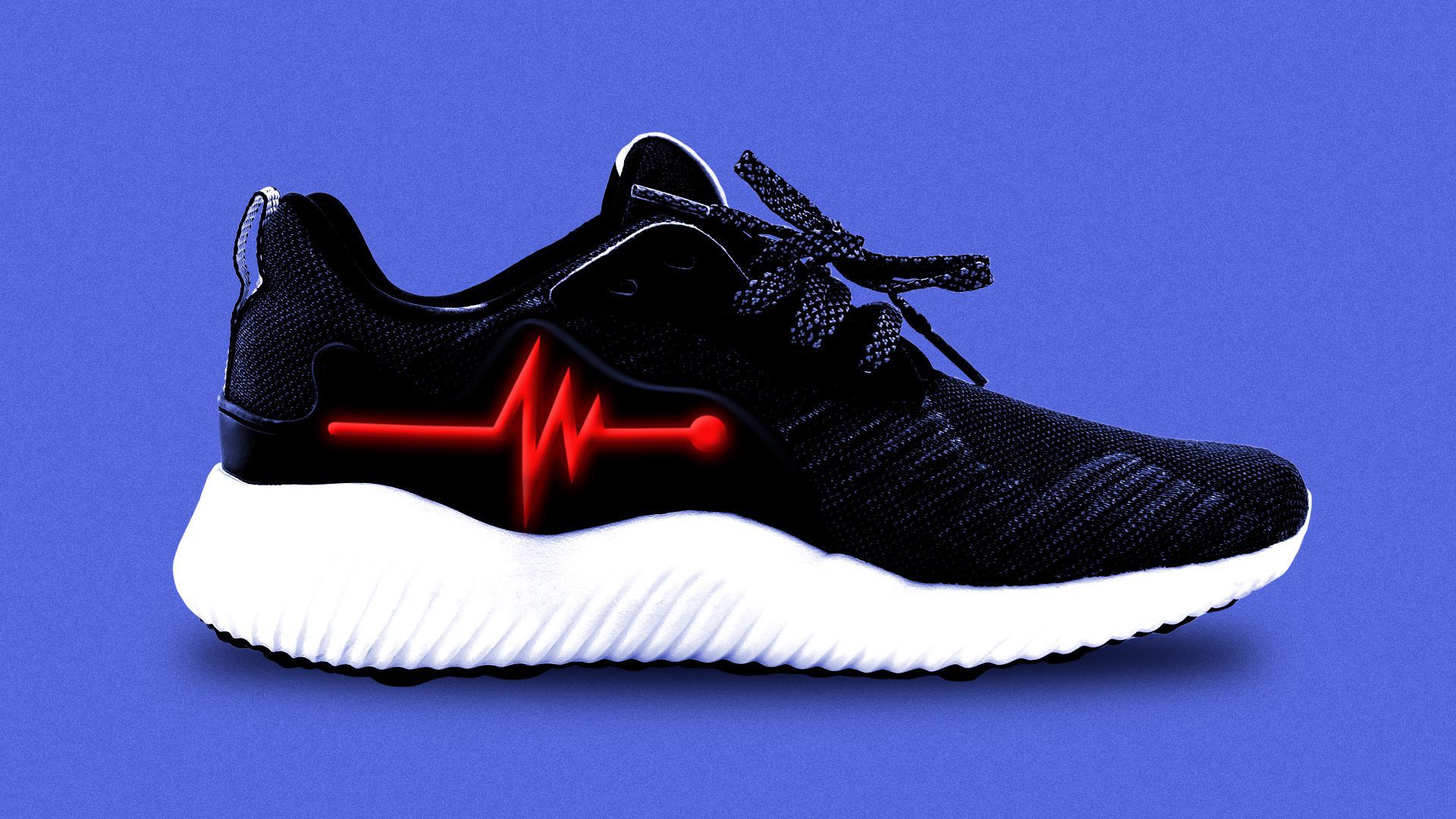Plus: Walking science | Wednesday, September 21, 2022
| | | | | | | Presented By Pfizer | | | | Axios Finish Line | | By Mike Allen, Erica Pandey and Jim VandeHei ·Sep 21, 2022 | | Sep 21, 2022 | | Welcome back. Keep chatting with us at FinishLine@axios.com. - Smart Brevity™ count: 367 words ... 1½ mins.
| | | | | | 1 big thing: Pick up the pace |  | | | Illustration: Sarah Grillo/Axios | | | | Walking is a simple way to improve health and lengthen life. But it's not just the number of steps you take that helps, it's also how quickly you take them. - The big picture: In a pair of new studies, published in JAMA Internal Medicine and JAMA Neurology, researchers compared brisk walkers' risk of disease and premature death with that of slow or average walkers and found that walking fast made a difference.
Why it matters: This new research draws a clear line between intense walks and leisurely strolls. - Researchers compared the 30 most intense minutes of activity in study participants' days and found that, even when the overall step counts were similar, those whose peak speeds were brisk — about 90 steps per minute — had lower health risks than those whose paces were average.
- Fast walkers had a 30% lower risk of developing dementia, a 25% lower risk of developing cancer or heart disease and a 35% overall lower risk of premature death.
Worth noting: The brisk walking doesn't have to be in one 30-minute chunk, study author Matthew Ahmadi, a research fellow at the University of Sydney, told the New York Times. - It can be in small bursts throughout your day. Picking up the pace from time to time makes the difference.
If you like to go for walks, try going at a faster clip for one or two minute intervals. Or even speed up your pacing around the office. The bottom line: Walking is something most of us incorporate into our days to live longer, healthier lives. |     | | | | | | A message from Pfizer | | An Accord for a Healthier World | | |  | | | | People living in lower income countries are disproportionately impacted by disease, causing lasting social and economic consequences. Through an Accord for a Healthier World, we're working to close the health equity gap. We believe better health is possible for everyone, everywhere. | | | | | | 🗻 Up the ante | | If you're getting in your steps, you're picking up the pace and you're looking for another way to challenge yourself, try walking up hills. - Walking on an incline is one of the most effective ways to strengthen your body and your heart.
- You can fiddle with the settings on a treadmill or just find a hill outside.
Be sure to pay attention to your body and take it slow at first if you're not used to hills. Healthline offers tips on incorporating hills into your workouts — safely. |     | | |  | | Are you a fan of this email format? It's called Smart Brevity®. Over 300 orgs use it — in a tool called Axios HQ — to drive productivity with clearer workplace communications. | | | | | | Axios thanks our partners for supporting our newsletters. If you're interested in advertising, learn more here.
Sponsorship has no influence on editorial content. Axios, 3100 Clarendon Blvd, Arlington VA 22201 | | | You received this email because you signed up for newsletters from Axios.
Change your preferences or unsubscribe here. | | | Was this email forwarded to you?
Sign up now to get Axios in your inbox. | | | | Follow Axios on social media:    | | | | | |






No comments:
Post a Comment